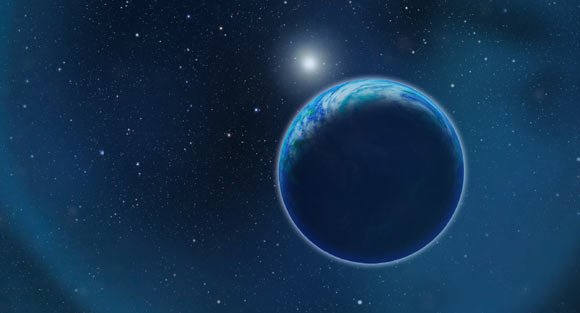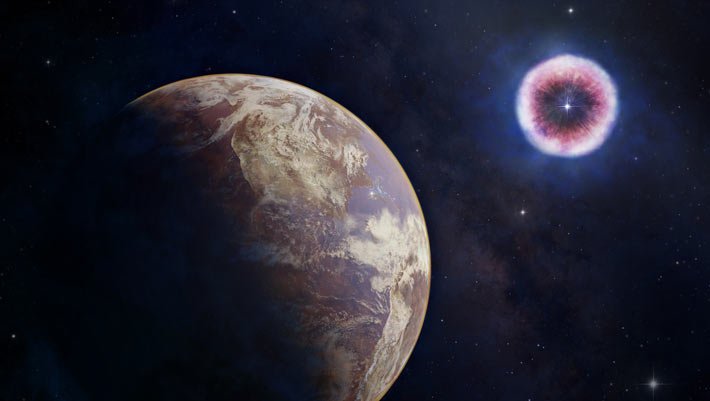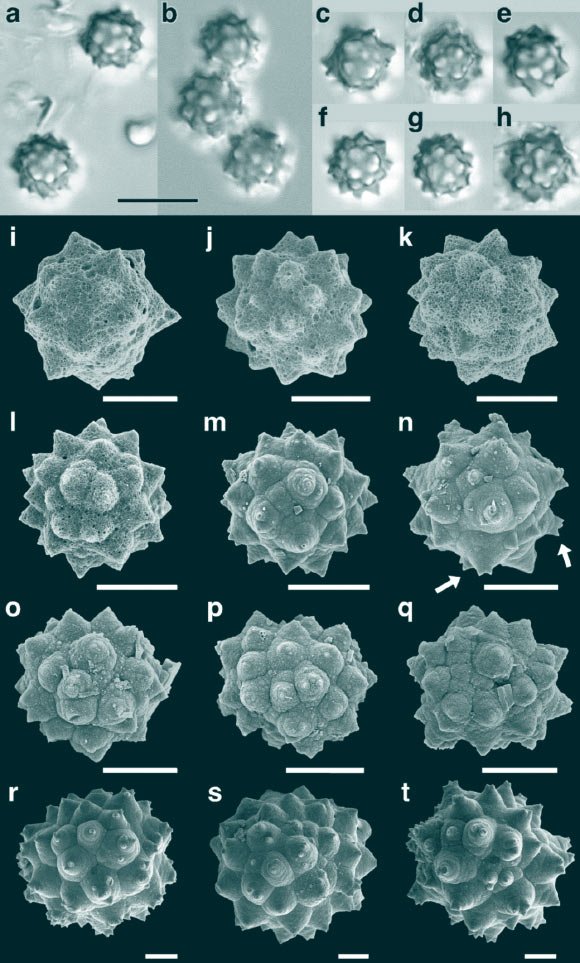White dwarfs may present amenable environments for life on planets formed within or migrated to their habitable zones, generating warmer surface environments than those of planets with main-sequence host stars, according to new research from the University of California, Irvine.

Exoplanets orbiting in the habitable zones of white dwarfs may harbor more clement conditions for life to compensate for the cooling and dimming of their host stars over time. Image credit: David A. Aguilar / CfA.
In the study, University of California, Irvine astronomer Aomawa Shields and colleagues compared the climates of water worlds with an Earth-like atmospheric composition orbiting in the habitable zone of two different types of stars: a white dwarf and the main-sequence K-dwarf star Kepler-62.
Using a 3D global climate computer model normally employed to study Earth’s environment, they found that the white dwarf exoplanet was much warmer than the Kepler-62 exoplanet despite analogous stellar energy distribution.
“While white dwarf stars may still give off some heat from residual nuclear activity in their outer layers, they no longer exhibit nuclear fusion at their cores,” Dr. Shields said.
“For this reason, not much consideration has been given to these stars’ ability to host habitable exoplanets.”
“Our computer simulations suggest that if rocky planets exist in their orbits, these planets could have more habitable real estate on their surfaces than previously thought.”
The white dwarf’s habitable zone is much closer to the star compared to that of other stars such as Kepler-62.
The authors stressed that this results in a much faster rotation period — 10 hours — for the white dwarf exoplanet, while Kepler-62’s exoplanet has a 155-day rotation period.
While both planets would likely be locked into a synchronous orbit — with a permanent dayside and a perpetual nightside — the ultrafast white dwarf planet’s rotation stretches out the cloud circulation around the planet.
The much slower, 155-day orbital period of the Kepler-62 planet contributes to a large, dayside, liquid water cloud mass.
“We expect synchronous rotation of an exoplanet in the habitable zone of a normal star like Kepler-62 to create more cloud cover on the planet’s dayside, reflecting incoming radiation away from the planet’s surface,” Dr. Shields said.
“That’s usually a good thing for planets orbiting close to the inner edge of their stars’ habitable zones, where they could stand to cool off a bit rather than lose their oceans to space in a runaway greenhouse.”
“But for a planet orbiting squarely in the middle of the habitable zone, it’s not such a good idea.”
“The planet orbiting Kepler-62 has so much cloud cover that it cools off too much, sacrificing precious habitable surface area in the process.”
“On the other hand, the planet orbiting the white dwarf is rotating so fast that it never has time to build up nearly as much cloud cover on its dayside, so it retains more heat, and that works in its favor.”
Fewer dayside liquid clouds and a stronger greenhouse effect on the nightside create warmer conditions on the white dwarf planet relative to the Kepler-62 planet.
“These results suggest that the white dwarf stellar environment, once thought of as inhospitable to life, may present new avenues for exoplanet and astrobiology researchers to pursue,” Dr. Shields said.
“As powerful observational capabilities to assess exoplanet atmospheres and astrobiology have come on line, such as those associated with the NASA/ESA/CSA James Webb Space Telescope, we could be entering a new phase in which we’re studying an entirely new class of worlds around previously unconsidered stars.”
The study was published in the Astrophysical Journal.
_____
Aomawa L. Shields et al. 2025. Increased Surface Temperatures of Habitable White Dwarf Worlds Relative to Main-sequence Exoplanets. ApJ 979, 45; doi: 10.3847/1538-4357/ad9827











